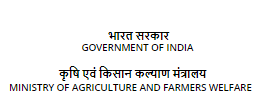Jute Activated Carbon (NINFET-JAC) as low-cost clean-up agent
Background:
The analysis of pesticide residues in agricultural and food commodities often suffers from matrix effects, leading to inaccurate estimation of residues. A clean-up step is therefore necessary not only to remove the co-extracted, matrix-derived compounds but also minimise the effects on signal enhancement or suppression of a target pesticide. Among various forms of adsorptive carbons, a commonly used petroleum-derived one is graphitised carbon black (GCB). Nevertheless, as this petroleum-based carbon is high-priced, developing a low-cost carbon cleanup agent is highly warranted. Further, there is no information on any sorts of carbon developed from jute stick biomass/ agro-residue for pesticide residue analysis in food commodities:
Technology Details:
The ‘golden fibre’ of jute (Corchorus sp.) is largely cultivated in many Asian countries including India, Bangladesh, Pakistan, among many others. Around 4 MT of jute stick is generated every year in India, posing disposal challenges for the jute growers. As a natural and an abundant by-product of the jute cultivation system, jute activated carbon (JAC) could be a low-cost clean-up agent as opposed to petroleum-based ones, although its potential has never been folded in food testing.


